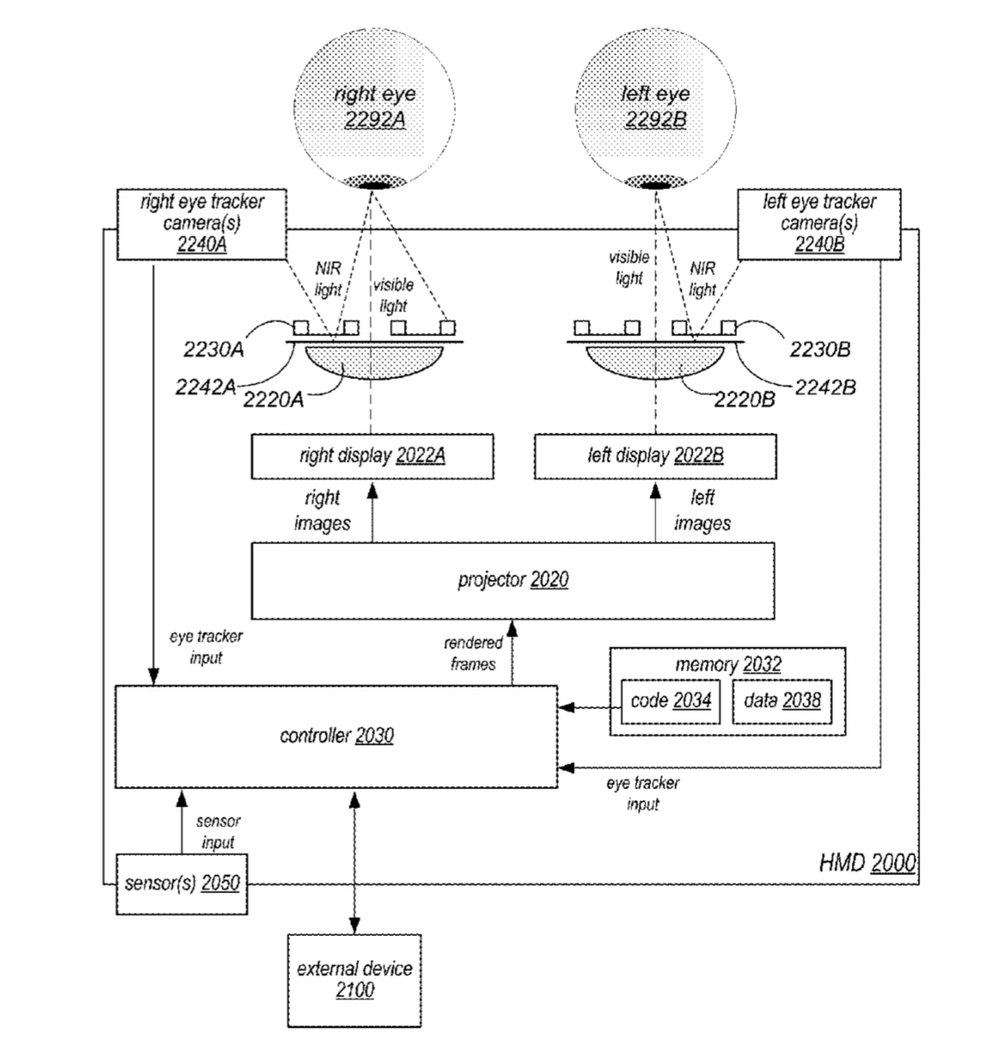Apple has filed for a patent (number 20180113508) for an “eye tracking system” for use with a head mounted display (HMD) — which have been dubbed “Apple Glasses.”

In the patent filing, Apple notes that virtual reality (VR) allows users to experience and/or interact with an immersive artificial environment, such that the user feels as if they were physically in that environment. For example, virtual reality systems may display stereoscopic scenes to users in order to create an illusion of depth, and a computer may adjust the scene content in real-time to provide the illusion of the user moving within the scene.
When the user views images through a virtual reality system, the user may thus feel as if they are moving within the scenes from a first-person point of view. Similarly, mixed reality (MR) combines computer generated information (referred to as virtual content) with real world images or a real world view to augment, or add content to, a user’s view of the world.
Apple says the simulated environments of VR and/or the mixed environments of MR may be utilized to provide an interactive user experience for multiple applications, such as applications that add virtual content to a real-time view of the viewer’s environment, interacting with virtual training environments, gaming, remotely controlling drones or other mechanical systems, viewing digital media content, interacting with the Internet, or the like.
Apple’s invention involves an eye tracking system for detecting position and movements of a user’s eyes in a HMD. The system may include at least one near-IR (NIR) eye tracking camera positioned at each side of the user’s face and pointed towards eye-facing surfaces of eyepieces of the HMD, an illumination source that emits NIR light towards the user’s eyes, and hot mirrors located between the eye-facing surfaces of the eyepieces and the user’s eyes.

The hot mirrors reflect at least a portion of NIR light, while allowing visible light to pass. The cameras capture images of the user’s eyes reflected by the hot mirrors. Positioning the hot mirrors at or near the eye-facing surfaces of the eyepieces allows the cameras to be placed at the sides of the user’s face without having to image through the eyepieces.
This is just one of several Apple patent filings involving VR and augmented reality (AR) headsets. You can find more here.
Venture capitalist Gene Munster says iPhone growth will peak in fiscal year 2019, then slowly decline as “Apple Glasses” emerge. He thinks those glasses, an AR-focused wearable, will be released mid-fiscal year 2020.
Of course, Apple files for — and is granted — lots of patents by the U.S. Patent & Trademark Office. Many are for inventions that never see the light of day. However, you never can tell which ones will materialize in a real product.
Like this article? Consider supporting Apple World Today with a $5 monthly Team AWT membership.
